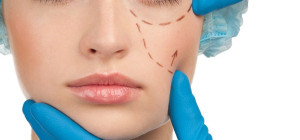Chemical peels are one of the answers to getting youthful skin then you may wonder which type of chemical peel is right for you? More individuals are opting for this treatment choice these days due to the many advantages it can offer.
In getting a chemical peel, you can expect to receive significant benefits. Sadeghi Center for Plastic Surgery rejuvenating chemical peels will not just expose a lighter, smoother, and more polished complexion, but to enhance the general appearance and texture of your skin.
Types of Chemical Peel
1. Beta chemical peel
If you have a lot of outbreaks, a beta peel could be able to help you. Salicylic acid, for example, aids in exfoliation and oil control. Salicylic acid has anti-inflammatory and antibacterial properties.
2. Glycolic chemical peel
Glycolic acids are alpha-hydroxy acids. It’s a mild-strength chemical peel. It has been demonstrated to improve the health and development of skin by improving tone, texture, and overall appearance. It rejuvenates, lightens, and refines the look of your skin.
3. Lactic chemical peel
Lactic acid is used to treat hyperpigmentation, age spots, and many other problems that leave the skin looking bland and irregular. Lactic acid also aids in the improvement of skin tone and the reduction of pore size.
4. Vitalize chemical peel
The Vitalize peel is one of the gentlest on the market, resulting in little time. The Vitalize Peel is for those who have moderate to severe skin defects. Patients should seem invigorated and energized after the peel.
5. Mandelic chemical peel
The Mandelic peel unclogs pores, exfoliates dead skin, and revitalizes the skin’s appearance and tone. A variety of Mandelic peels might help you get longer-lasting results. Mandelic acid offers a multitude of benefits, including the possibility of being softer on the skin.
6. Jessner chemical peel
A Jessner’s peel is a kind of chemical peel that is used to improve the appearance of your skin. The Jessner peel is used to treat skin problems, hyperpigmentation, and acne scars, as well as to remove dark spots and age spots, even out skin tone, flatten fine lines and wrinkles, decrease scar appearance, and prevent scar development.
7. Vitamin C chemical peel
The Vitamin C chemical peel is great for acne sufferers since it thoroughly cleanses pores and has an antibacterial component that prevents them from reemerging.
8. Pigment balancing chemical peel
The pigment balancing chemical peel is a personalized chemical peel that reduces pigmentation and brightens the skin from the irregular look of photodamage and mottled skin drastically.
What Chemical Peel Suits Your Skin?
You may question as to what kind of chemical peel is the best for me as a patient. The ideal treatment is determined by one’s skin type and tone, as well as the ailment they seek to cure. A dermatologist administers an exfoliant acid to the heavier parts of the skin, such as the chin, nose, and cheeks, first, and subsequently to the thinner portions around the eyes and mouth, throughout a chemical peel.
Chemical peels are available in a number of strengths to treat a variety of skin types and concerns, and there is one that is suited for each individual’s needs.
Chemical peels are divided into three types depending on how thoroughly they exfoliate the skin:
- superficial peels
- medium-depth peels
- deep peels
What is the Recovery Time for a Chemical Peel?
You may observe that your skin seems red during the first 24 hours following your chemical peel. For protection from the sun, washing, moisturizing, and putting protective ointments on your skin, observe your doctor’s instructions.
It will take you almost no time to recover from a mild and gentle chemical peel. There may be a reddish hue for a short while, but it will go quickly. The treated areas need seven to fourteen days to heal after a light chemical peel.
How Long Do Chemical Peels Take?
Treatments might last anywhere from 30 to 90 minutes. In the majority of cases, your skin will start to peel three days after you’ve been burned. Mild or deep chemical peels might take two to three weeks to recover from. The peeling usually stops until the burn has healed, which takes around seven days for minor burns.
During your appointment, your doctor will go through the many chemical peel alternatives with you and help you decide which one is best for you. Your doctor will customize the recipe for your skin and administer it to your skin.







